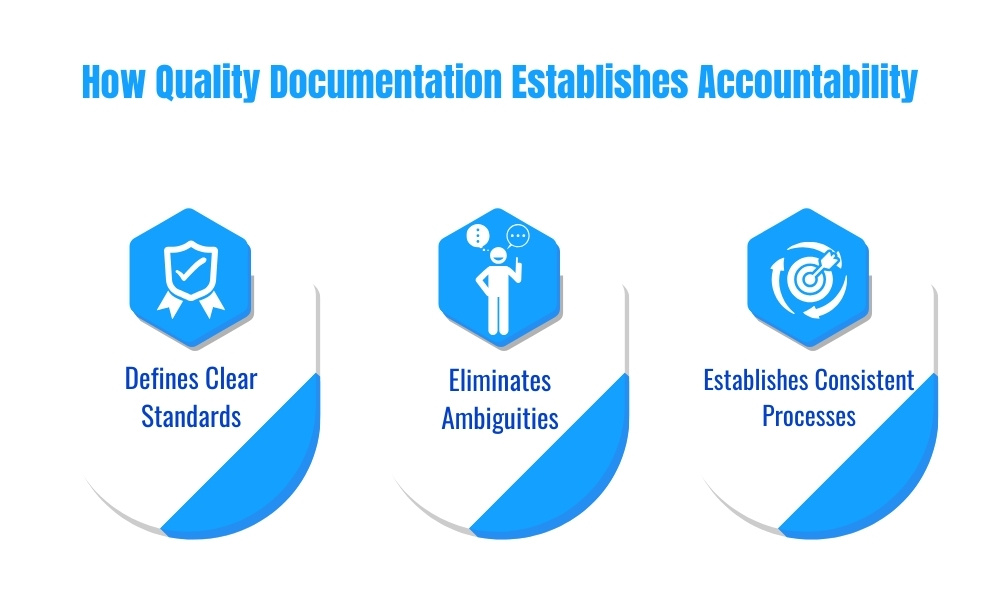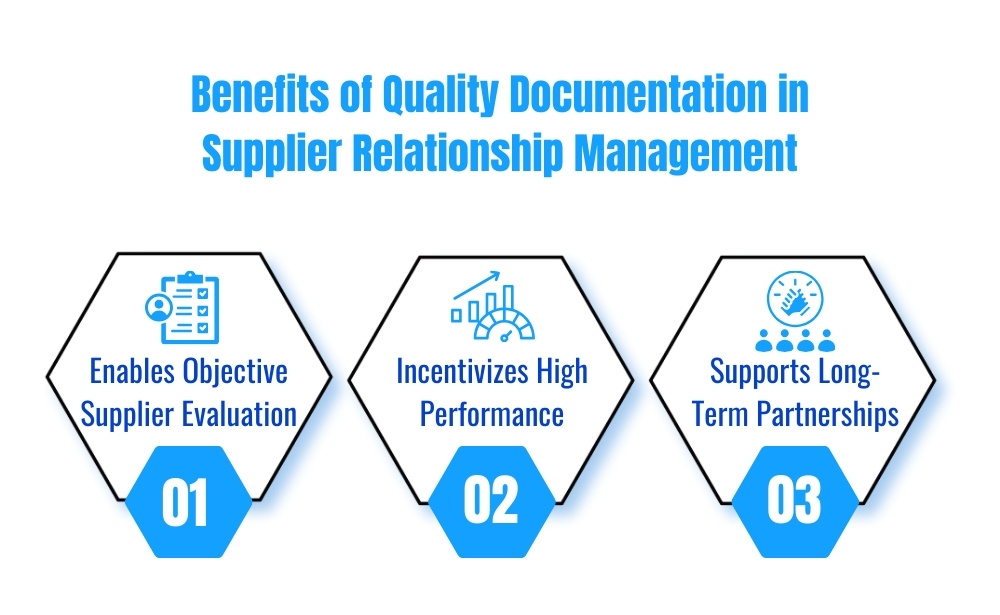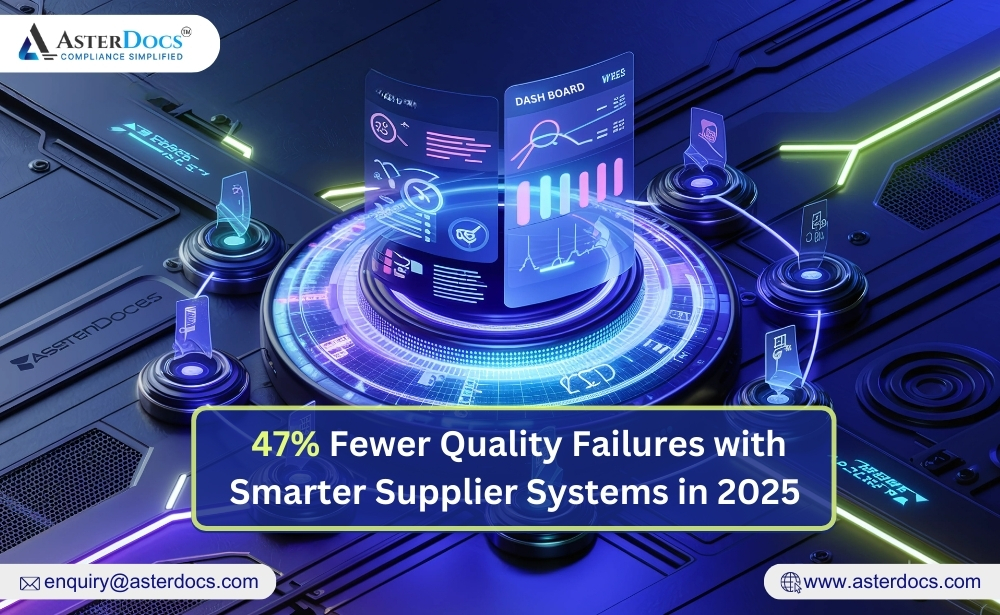Managing suppliers effectively is a complex task that goes beyond simple transactions. For businesses aiming to maintain a resilient, quality-driven supply chain, quality system documentation isn’t just paperwork—it’s a foundational tool for achieving consistency, mitigating risks, and building trust with suppliers. In industries where quality and compliance are critical, a well-implemented documentation system can be the difference between success and setbacks.
Below, we’ll explore why quality system documentation plays a vital role in supplier management, how it can streamline processes, and the value it adds in terms of accountability, risk mitigation, and continuous improvement.
The Foundation of Accountability: Quality System Documentation
A reliable quality system documentation process builds a strong foundation of accountability within supplier relationships. Documentation sets clear expectations, standards, and processes for suppliers, eliminating ambiguities and misunderstandings. This clarity isn’t just about maintaining records; it’s about ensuring every stakeholder knows their responsibilities.
- Defines Clear Standards: Documentation lays out precise requirements for suppliers, from product specifications to compliance standards, helping prevent misinterpretations.
- Eliminates Ambiguities: With documented protocols, there’s no guesswork for suppliers—they understand what’s expected at every step.
- Establishes Consistent Processes: Each document acts as a benchmark, ensuring that quality expectations are consistent across suppliers and over time.

This foundation of accountability allows both businesses and suppliers to align on quality, creating a smoother and more effective working relationship.
Building Trust and Transparency with Quality Documentation
One of the most significant advantages of quality system documentation is its ability to foster transparency in supplier relationships. When documentation is shared openly and regularly updated, suppliers and businesses alike can work together more effectively.
- Fosters Open Communication: Sharing documentation related to quality standards and compliance requirements allows suppliers to better understand and meet expectations.
- Increases Accountability: When suppliers know their performance is documented, they are more likely to adhere to established quality standards.
- Strengthens Relationships: A transparent approach where quality is a shared responsibility helps build trust, fostering long-term partnerships over transactional engagements.
With a documentation system that emphasizes transparency, companies are better equipped to build lasting relationships based on trust, ultimately resulting in a more reliable supply chain.
The Role of Quality System Documentation in Risk Mitigation
In supplier management, even minor lapses in quality can lead to significant risks. Quality system documentation serves as a safeguard, enabling companies to identify and address issues at the supplier level before they impact the entire supply chain.
- Reduces Quality-Related Risks: Comprehensive documentation helps in spotting potential risks early, whether related to raw material quality, supplier processes, or compliance issues.
- Supports Proactive Interventions: With detailed records, companies can proactively address issues before they escalate, avoiding costly recalls or disruptions.
- Builds a Resilient Supply Chain: By maintaining documentation on supplier performance, companies can act quickly if a particular supplier becomes a risk, ensuring that alternative options are readily available.

When quality issues are documented, tracked, and managed systematically, businesses are better prepared to maintain supply chain resilience and operational continuity.
Ensuring Consistency Across Global Supplier Networks
For companies with a global supplier base, maintaining consistency in quality across different regions and markets is crucial. Quality system documentation plays a critical role in standardizing expectations, making it easier for companies to enforce uniform quality standards regardless of geographic location.
- Standardizes Supplier Quality: Documentation ensures that every supplier, whether local or international, adheres to the same quality standards.
- Enables Effective Monitoring: With standardized criteria, companies can more easily monitor supplier performance, making comparisons straightforward and objective.
- Facilitates Regulatory Compliance: Different regions may have different regulatory requirements, but with a centralized documentation system, companies can ensure all suppliers meet both local and international standards.
By creating a structured system where every supplier is held to the same standards, businesses can mitigate quality inconsistencies and ensure their products meet the necessary standards no matter where they’re sourced.
Quality Documentation as a Tool for Continuous Improvement
A quality system isn’t static; it’s a resource that should evolve to meet new challenges and drive continuous improvement. Quality system documentation allows businesses to record past performance, analyze areas for improvement, and refine supplier standards.
- Tracks Performance Over Time: Documentation provides a historical view, showing which suppliers consistently meet standards and which require improvement.
- Facilitates Data-Driven Decisions: By analyzing documented trends, companies can adjust quality benchmarks or introduce corrective actions to improve supplier performance.
- Encourages Supplier Engagement: When suppliers see their performance tracked and documented, it encourages them to actively participate in continuous improvement efforts.
This focus on continuous improvement doesn’t just benefit the company; it strengthens the entire supply chain by ensuring that all parties are committed to elevating quality standards.
The Strategic Advantage of Quality Documentation in Supplier Relationship Management
Quality system documentation isn’t just a regulatory requirement; it’s a strategic asset that can enhance supplier relationship management. By using documentation as a basis for evaluating supplier performance, businesses can foster stronger partnerships and drive better results.
- Enables Objective Supplier Evaluation: Documentation allows for a data-driven approach to assessing supplier performance, helping businesses make fair, informed decisions.
- Incentivizes High Performance: When suppliers know their performance is evaluated based on documented metrics, it motivates them to consistently meet or exceed standards.
- Supports Long-Term Partnerships: Using documentation to provide structured feedback strengthens relationships by setting clear expectations and fostering a culture of continuous improvement.

A documented approach not only supports effective supplier management but also builds a foundation for lasting, mutually beneficial partnerships.
Conclusion
Quality system documentation is a non-negotiable element of successful supplier management. Far from being just a record-keeping exercise, it’s a strategic tool that drives accountability, transparency, and resilience across the supply chain. By prioritizing quality documentation, businesses can foster stronger supplier relationships, mitigate risks, and ensure consistent quality in every product sourced.
In an increasingly competitive market, investing in quality system documentation isn’t just about compliance—it’s about securing a competitive edge and setting a standard for excellence that resonates throughout the supply chain.
Are you ready to strengthen your supplier management strategy with the right documentation practices?













